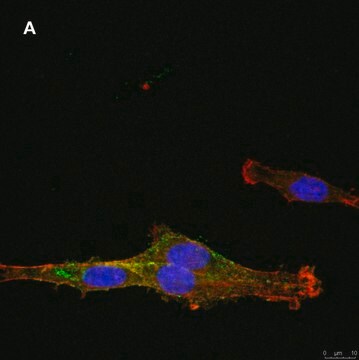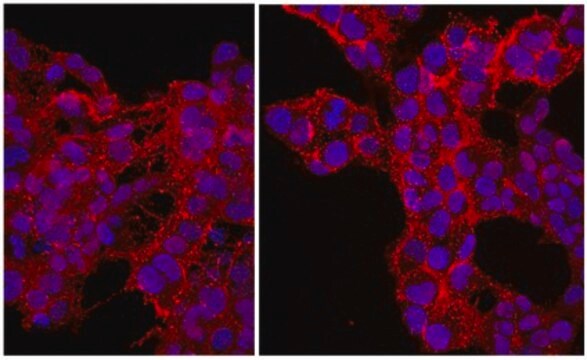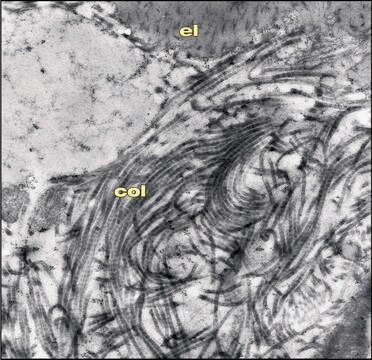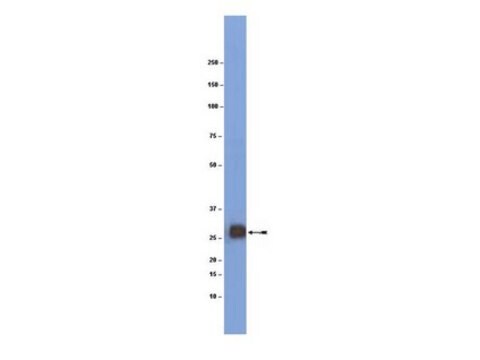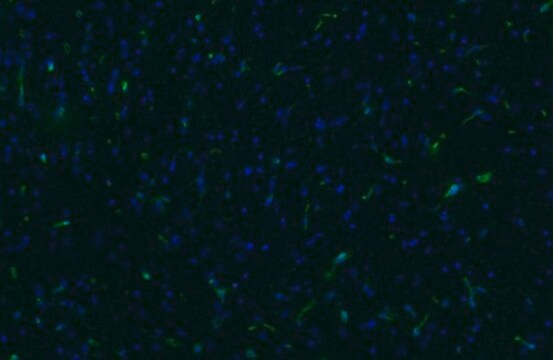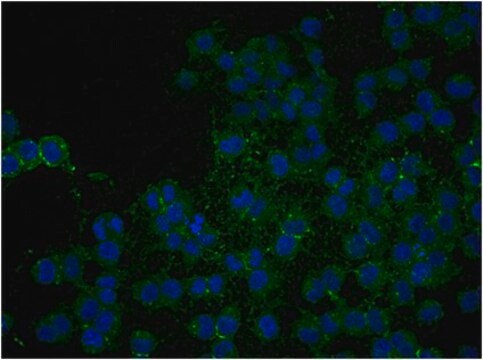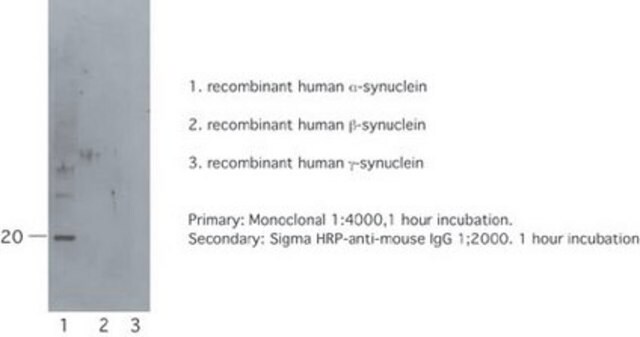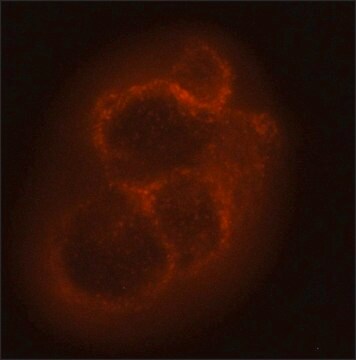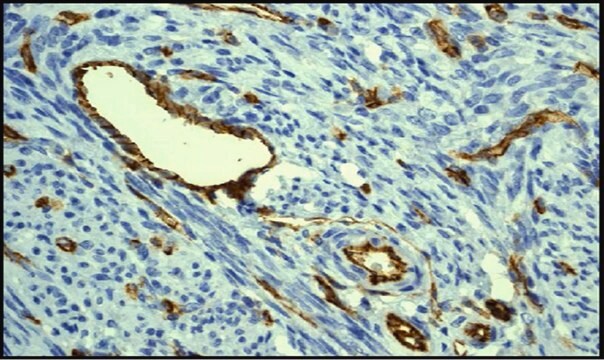AB5320
Anti-NG2 Chondroitin Sulfate Proteoglycan Antibody
Chemicon®, from rabbit
Synonim(y):
Chondroitin sulfate proteoglycan NG2, Melanoma chondroitin sulfate proteoglycan 3, Melanoma-associated chondroitin sulfate proteoglycan, chondroitin sulfate proteoglycan 4, chondroitin sulfate proteoglycan 4 (melanoma-associated)
About This Item
Polecane produkty
pochodzenie biologiczne
rabbit
Poziom jakości
forma przeciwciała
purified antibody
rodzaj przeciwciała
primary antibodies
klon
polyclonal
oczyszczone przez
affinity chromatography
reaktywność gatunkowa
rat, mouse, monkey, human
producent / nazwa handlowa
Chemicon®
metody
ELISA: suitable
immunocytochemistry: suitable
immunohistochemistry: suitable
immunoprecipitation (IP): suitable
western blot: suitable
numer dostępu NCBI
numer dostępu UniProt
Warunki transportu
dry ice
docelowa modyfikacja potranslacyjna
unmodified
informacje o genach
human ... CSPG4(1464)
mouse ... Cspg4(121021)
rat ... Cspg4(81651)
rhesus monkey ... Cspg4(713086)
Opis ogólny
Specyficzność
Immunogen
Zastosowanie
A 1:150-1:600 dilution of a previous lot was used in IC.
Immunohistochemistry:
1:200 dilution of a previous lot was used on frozen sections of embryonic mouse brain using an Alexa Fluor conjugated secondary antibody. Care should be taken to avoid overfixing tissue sections. A short (5-10 minute) fix in 2-4% PFA is recommended.
Immunoprecipitation:
2 μg/mL concentration of a previous lot was used in IP.
ELISA:
A 1:1,500-1:3,000 dilution of a previous lot was used in ELISA.
Optimal working dilutions and protocols must be determined by end user
Neuroscience
Neuronal & Glial Markers
Jakość
Western Blot: 1:1000 dilution of this lot detected NG2 chondroitin sulfate on 10 μg of rat brain lysates.
Opis wartości docelowych
Postać fizyczna
Przechowywanie i stabilność
Handling Recommendations:
Upon receipt, and prior to removing the cap, centrifuge the vial and gently mix the solution. Aliquot into microcentrifuge tubes and store at -20°C. Avoid repeated freeze/thaw cycles, which may damage IgG and affect product performance.
Komentarz do analizy
Human melanoma, glioma and proliferating brain endothelial cells, rat B49 glial cell extracts or embryonic mouse brain tissue.
Inne uwagi
Informacje prawne
Oświadczenie o zrzeczeniu się odpowiedzialności
Nie możesz znaleźć właściwego produktu?
Wypróbuj nasz Narzędzie selektora produktów.
polecane
Kod klasy składowania
12 - Non Combustible Liquids
Klasa zagrożenia wodnego (WGK)
WGK 2
Temperatura zapłonu (°F)
Not applicable
Temperatura zapłonu (°C)
Not applicable
Certyfikaty analizy (CoA)
Poszukaj Certyfikaty analizy (CoA), wpisując numer partii/serii produktów. Numery serii i partii można znaleźć na etykiecie produktu po słowach „seria” lub „partia”.
Masz już ten produkt?
Dokumenty związane z niedawno zakupionymi produktami zostały zamieszczone w Bibliotece dokumentów.
Klienci oglądali również te produkty
Produkty
Przeciwciała łączą się z określonymi antygenami w celu wytworzenia ekskluzywnego kompleksu przeciwciało-antygen. Dowiedz się więcej o naturze tego wiązania i jego wykorzystaniu jako znacznika molekularnego w badaniach.
Poznaj różnice między przeciwciałami monoklonalnymi i poliklonalnymi, w tym sposób generowania przeciwciał, numery klonów i formaty przeciwciał.
Immunofluorescencja wykorzystuje cząsteczki fluorescencyjne sprzężone z przeciwciałami do lokalizacji białek, potwierdzania modyfikacji i wizualizacji kompleksów białkowych.
Human iPSC neural differentiation media and protocols used to generate neural stem cells, neurons and glial cell types.
Nasz zespół naukowców ma doświadczenie we wszystkich obszarach badań, w tym w naukach przyrodniczych, materiałoznawstwie, syntezie chemicznej, chromatografii, analityce i wielu innych dziedzinach.
Skontaktuj się z zespołem ds. pomocy technicznej
